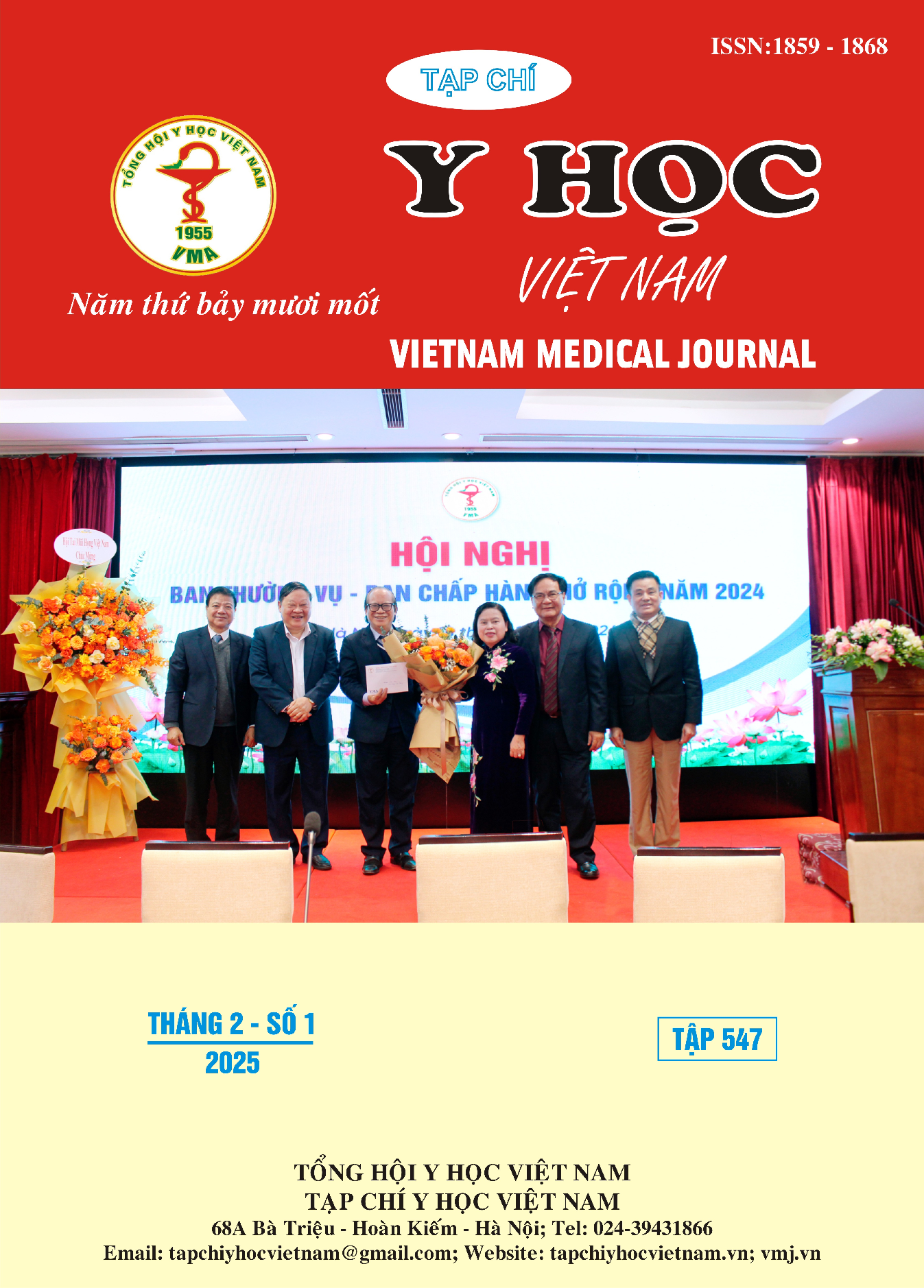ĐÁNH GIÁ KẾT QUẢ BƯỚC ĐẦU ĐIỀU TRỊ NHƯỢC THỊ DO VIỄN THỊ Ở TRẺ EM BẰNG PHƯƠNG PHÁP CHỈNH KÍNH TẠI BỆNH VIỆN MẮT TRUNG ƯƠNG NĂM 2024
Main Article Content
Abstract
Objective: To evaluate the initial outcomes of amblyopia treatment due to hyperopia in children using corrective lenses. Study Method: Uncontrolled clinical intervention. Results: The study included 120 children (203 eyes) with amblyopia due to hyperopia, aged from 5 to 15 years. The male-to-female ratio was 45.8% to 54.2%. The average age was 9.2 ± 2.72 years, with 45.8% of the children in the 5 to 8-year age group. Moderate hyperopia was seen in 62.1% of cases, and severe hyperopia in 30.5%. Severe amblyopia was observed in 7.9% of cases, moderate in 37.4%, and mild in 54.7%. Treatment Outcomes: After one month, visual acuity improved by 1 line in 50 eyes, by 2 lines in 20 eyes, and by 3 or more lines in 15 eyes. After three months, 80 eyes showed a 1-line improvement, 53 eyes improved by 2 lines, and 35 eyes by 3 or more lines, with 168 eyes (82.8%) showing improvement in visual acuity to varying degrees. Moderate amblyopia decreased to 26.6%, mild amblyopia to 49.3%, and 28.8% of cases showed complete resolution of amblyopia, with no cases of severe amblyopia remaining. Binocular vision and stereopsis improved at different levels after one and three months. Conclusion: There was a marked improvement in visual acuity before and after correction with glasses. Amblyopia treatment using only corrective lenses showed significant improvements in visual acuity and binocular vision at both one and three months, with varying degrees of improvement.
Article Details
Keywords
amblyopia, hyperopia, visual acuity, corrective glasses.
References
2. Nguyễn Thanh Vân (2003), Nghiên cứu đặc điểm lâm sàng và kết quả điều trị nhược thị do viễn thị ở trẻ em. Luận văn thạc sỹ y học, Trường Đại học Y Hà Nội.
3. Hương V.T.và Hiền N.T.T. (2023). Nhận xét đặc điểm tật khúc xạ ở trẻ em tại bệnh viện mắt trung ương giai đoạn 2021-2022. Tạp chí Y học Việt Nam, 523(1)
4. Bộ Y tế (2015), “Nhược thị”, Hướng dẫn chẩn đoán và điều trị các bệnh về mắt, Bộ y tế.
5. Zagui R.M.B. (2018). Amblyopia: Types, diagnosis, treatment, and new perspectives. American Academy of Ophthalmology, 102, 1492–1496.
6. Birch E.E, và Kelly K.R. (2023). Amblyopia and the whole child. Progress in Retinal and Eye Research, 93, 101168.
7. Emmanuel B.U.I., Burns J.G., và Thomson B. (2023). Amblyopia: A review of unmet needs, current treatment options, and emerging therapies. Survey of Ophthalmology, 68(3), 507–525.
8. Ramaswamy S., O’Leary K., Han M. và cộng sự. (2019). Comparison Between the Best Stereopsis Test and the Stereo Fly Test. Optometry & Visual Performance, 7(3).
9. Marjean Taylor Kulp, Gui-shuang Ying, Jiayan Huang, Bruce D. Moore, et al (2014), Associations between Hyperopia and other Vision and Refractive Error Characteristics. Optometry and vision science, 91,4: 383-389.
10. American Optometric Assocation (1997). Care of the patient with hyperopia, St.Luis.


